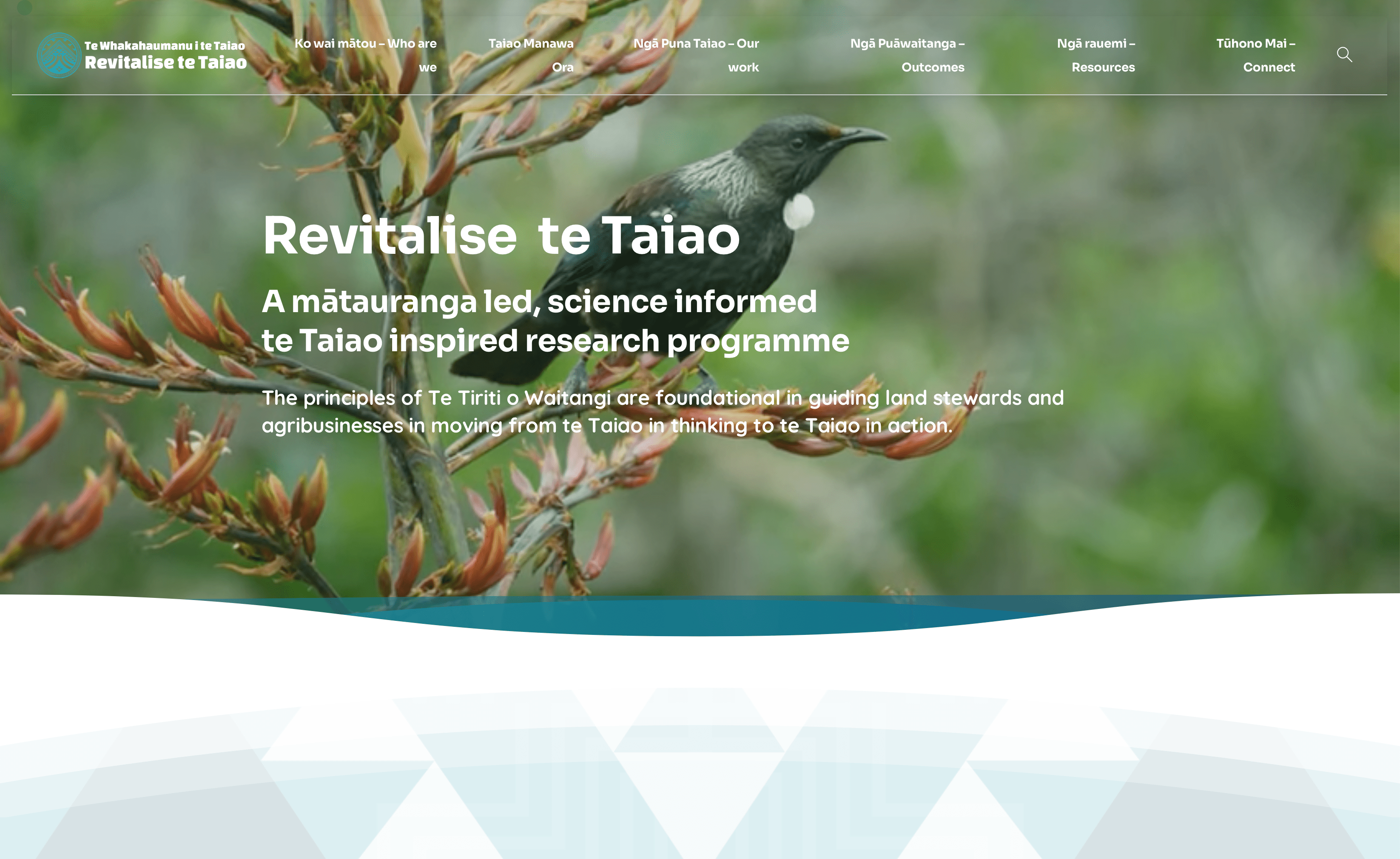Bringing Future Landscapes to Life with a Visualisation Tool
An exciting new tool will make it much easier for farmers to visualise the most suitable uses for their land. Working in collaboration with AgResearch and representatives from Te Arawa, Our Land and Water is funding work to allow users of the tool to consider an even wider range of potential land uses that account for their environmental, economic, social and cultural aspirations.
Dr Seth Laurenson and Dr Remy Lasseur, of AgResearch, are helping farmers see the future, thanks to the world-renowned visualisation technology developed by Animation Research Limited (ARL), the Kiwi company that revolutionised America’s Cup sports broadcasting.
The tool will help landowners visualise diverse uses for their land, from growing hemp to tourism. It allows landowners to see what their properties would look like as a result of any changes, as well as understand how changes would affect nutrient loss, farm finances, carbon sequestration, biodiversity and more.
“What we're trying to do is find ways for farmers to better comprehend a future scenario for their land,” explains Seth. “Simplifying the complexity and providing the visual realism helps provide clarity and foresight to those discussions that might take place across the kitchen table, in the boardroom or amongst family and community groups. Being able to simulate our land and our unique circumstances makes it that bit more real.”
The development of the visualisation tool is part of the MBIE-funded New Zealand Bioeconomy in the Digital Age (NZBIDA) research programme, designed to enable transformational change to the country’s agricultural sector and supply chains.
Later this year, research as part of Our Land and Water will bring in a framework to visualise the impacts of different land use activities on environmental, economic, social and cultural wellbeing. The team will be working with representatives from Te Arawa to achieve this.
This research will allow users of the tool to consider a wider range of potential future land uses, and make decisions based on a wider range of aspirations.
The Our Land and Water research will also give iwi and hapū land-owners the ability to discuss land-use change in terms of impact on the mauri of each dimension, enabling common understanding and more confident decision-making around land-use change.
The visualisation tool will link to solutions developed by Land Use Suitability, another Our Land and Water research programme. In particular, Land Use Suitability will provide data for the ‘productive potential’ and ‘relative contribution’ metrics and scales that will be used to determine and visualise impacts at various scales including the farm and sub-farm scale.
Bringing the vast amount of available digital data to life with a high-quality visualisation tool will “help accelerate adoption and change,” says Seth.
“I often think we need to stand back as scientists and say, ‘I need to try something new’. This is new, and the potential is huge. Landowners will welcome any help they can get to make decisions about their futures and we think this could be a big help.”
“You don’t have to wait two years, five years or ten years to see what effect decisions have on your land. You can see it in 10 minutes in a really informed way.”
—
For related research, see:
Author
 View Our Strategy Document 2019 – 2024
View Our Strategy Document 2019 – 2024




3 Comments
This seems like an excellent and timely tool. I’m interested to learn more about it, is there a web-based demo I could access.
As the Principal Strategic Advisor for the Waikato Regional Council, I have an interest to explore the ‘best’ use of land using a comprehensive approach of natural capital and ecosystem services assessment to explore transformational change to future land use options. We are still focussing on best management practices of current land use (mainly farming) than taking a broader perspective.
Kia ora Beat – we are hoping to have a demo of the tool available to try out at our upcoming Symposium. If you’re interested in coming along to hear more about our work on land use suitability we’d love to see you there – you can register here: https://ourlandandwater.nz/news/our-land-and-water-symposium-2019/
This is great. Are you looking for further test cases? We are about to launch into a project looking at planting trees for shade and shelter on Onuku Maori Lands Trust and looking at this I can see some real benefits. Is there someone I could contact?